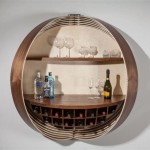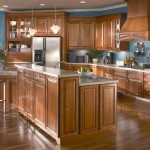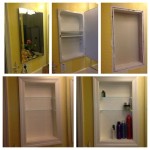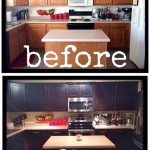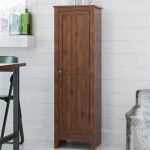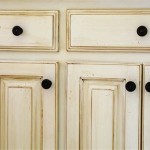Do You Have To Prime Cabinets Before Painting Them?
Painting cabinets represents a cost-effective method to revitalize a kitchen or bathroom without undertaking a complete renovation. However, achieving a professional and durable finish necessitates careful preparation, and the question of whether to prime cabinets before painting is a pivotal one. This article delves into the importance of priming, the circumstances under which it is essential, and the benefits it provides.
Priming, in essence, is the application of a preparatory coating to a surface before the application of paint. This coating serves several crucial functions, including enhancing adhesion, blocking stains, and creating a uniform surface for the paint to adhere to. The decision to prime cabinets before painting is contingent upon several factors, including the type of existing finish, the cabinet material, and the desired outcome of the paint job.
Understanding the Necessity of Priming
The primary reason for priming cabinets lies in its ability to promote adhesion. Most cabinet surfaces, particularly those with a glossy or slick finish, do not readily accept paint. Without priming, the paint may not properly bond to the surface, leading to peeling, chipping, and an overall compromised finish. Priming creates a textured surface that the paint can effectively grip, ensuring a long-lasting and durable result. This is especially important in high-use areas like kitchens and bathrooms where cabinets are frequently touched and exposed to moisture and temperature fluctuations.
Furthermore, priming helps to seal the cabinet surface. Many cabinet materials, such as raw wood or particleboard, are porous and can absorb paint unevenly. This can result in a blotchy or inconsistent finish, requiring multiple coats of paint to achieve the desired color saturation. A primer fills in these pores, creating a smooth, uniform surface that minimizes paint absorption. This not only saves on paint consumption but also ensures a consistent color and sheen across all cabinet surfaces. This uniform base also reduces the likelihood of the underlying material affecting the final painted color.
Another significant benefit of priming is its ability to block stains. Cabinets, particularly those in kitchens, are often exposed to grease, food splatters, and other contaminants that can seep into the wood. These stains can bleed through subsequent layers of paint, resulting in discoloration and an unsightly appearance. Priming acts as a barrier, preventing these stains from migrating to the surface and ruining the final finish. Stain-blocking primers are formulated with specific chemicals designed to encapsulate and prevent the passage of stains, ensuring a clean and vibrant paint job. This is particularly crucial when painting over dark or heavily stained cabinets.
Situations Where Priming is Essential
Several specific scenarios necessitate the application of primer before painting cabinets. One such scenario involves cabinets made of raw wood. Raw wood is highly absorbent and prone to uneven paint application. Priming seals the wood pores, preventing excessive paint absorption and creating a stable base for the paint to adhere to. Without priming, the paint may sink into the wood, requiring multiple coats and still resulting in an uneven finish. A wood-specific primer is often recommended for raw wood cabinets to ensure optimal adhesion and sealing.
Cabinets with a glossy or slick finish, such as those coated with laminate or polyurethane, also require priming. These surfaces are inherently non-porous and resist paint adhesion. Sanding the surface can improve adhesion, but priming is still necessary to ensure a strong bond. A bonding primer, specifically designed for slick surfaces, is ideal in these situations. These primers contain chemicals that create a mechanical bond with the smooth surface, providing a secure foundation for the paint.
If the cabinets have been previously painted with a dark color, priming is crucial to prevent bleed-through. Dark colors can often show through lighter paint colors, especially when using light or pastel shades. A tinted primer, matched to the final paint color, can help to neutralize the existing dark color and prevent it from affecting the new paint. Alternatively, a high-hiding primer can be used to effectively block the dark color from bleeding through.
When painting cabinets with a significant color change, priming is also recommended. For instance, if you are painting dark brown cabinets white, priming helps to create a uniform base that allows the white paint to achieve its true color without being influenced by the underlying brown. This minimizes the number of coats of white paint required, saving time and materials. A tinted primer can be particularly effective in these situations, helping to bridge the color gap between the old and new finishes.
The Benefits of Using Primer
Beyond the immediate benefits of adhesion and stain blocking, priming offers several long-term advantages for painted cabinets. Priming enhances the durability of the paint finish. By providing a strong bond between the paint and the cabinet surface, primer reduces the likelihood of chipping, peeling, and cracking. This is especially important in high-traffic areas like kitchens where cabinets are subjected to constant use and potential wear and tear. A well-primed and painted surface will withstand daily use for a longer period, reducing the need for frequent touch-ups and repainting.
Priming also contributes to the overall appearance of the painted cabinets. A properly primed surface provides a smooth, uniform base that allows the paint to flow evenly and create a consistent finish. This results in a professional-looking paint job with no visible imperfections. The improved smoothness also enhances the sheen of the paint, making the cabinets look more polished and refined. This is particularly noticeable when using high-gloss or semi-gloss paints.
Furthermore, priming extends the lifespan of the paint job. By providing a stable and durable base, primer protects the paint from the elements and prevents premature degradation. This reduces the frequency of repainting, saving time and money in the long run. A well-maintained paint job can significantly enhance the value and appeal of a home, making priming a worthwhile investment.
The selection of the appropriate primer is also critical. Different primers are formulated for different purposes, such as stain blocking, adhesion, and sealing. Choosing the right primer for the specific cabinet material and the desired outcome is essential for achieving optimal results. Consulting with a paint professional can provide valuable guidance in selecting the appropriate primer for a particular project. Understanding the specific needs of the project will ensure a successful and long-lasting paint job.
Proper application of the primer is as important as selecting the right primer. The primer should be applied in thin, even coats, following the manufacturer's instructions. Allowing the primer to dry completely before applying the paint is crucial for achieving optimal adhesion and preventing any potential issues. Rushing the priming process can compromise the quality of the final paint job, negating the benefits of using primer in the first place. Patience and attention to detail are key to achieving a professional-looking and durable paint finish.
In summary, while it may be tempting to skip the priming step to save time and money, the benefits of priming cabinets before painting far outweigh the perceived drawbacks. Priming enhances adhesion, blocks stains, creates a uniform surface, and extends the lifespan of the paint job. In many situations, particularly with raw wood, glossy finishes, or significant color changes, priming is essential for achieving a professional and durable finish. By taking the time to properly prime cabinets, homeowners can ensure a beautiful and long-lasting paint job that enhances the look and value of their homes.

How To Prime Cabinets For A Smooth Finish The Turquoise Home

Refinish Kitchen Cabinets With Kilz Restoration Primer

How To Prime Cabinets For A Smooth Finish The Turquoise Home

How To Paint Kitchen Cabinets From A Diyer Who Has Done It 3 Times

How To Paint Laminate Cabinets Without Sanding The Palette Muse

How To Prime Cabinets For A Smooth Finish The Turquoise Home

The Best Way To Paint Kitchen Cabinets No Sanding Palette Muse

Do You Have To Prime Cabinets That Are Already Painted

Avoid These Mistakes How To Paint Cabinets That Are Already Painted Grace In My Space

The Best Primer For Cabinets Erin Zubot Design
Related Posts

